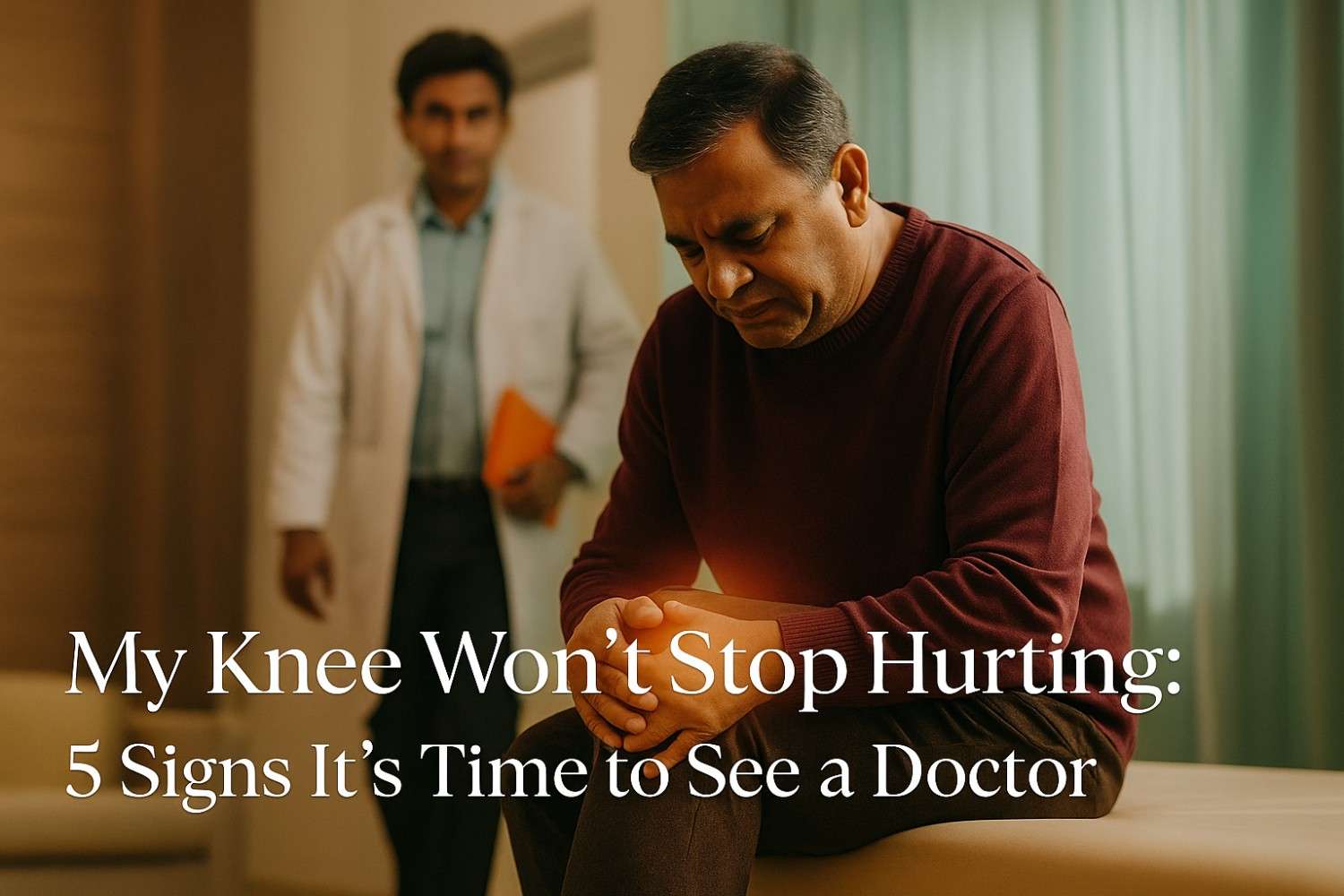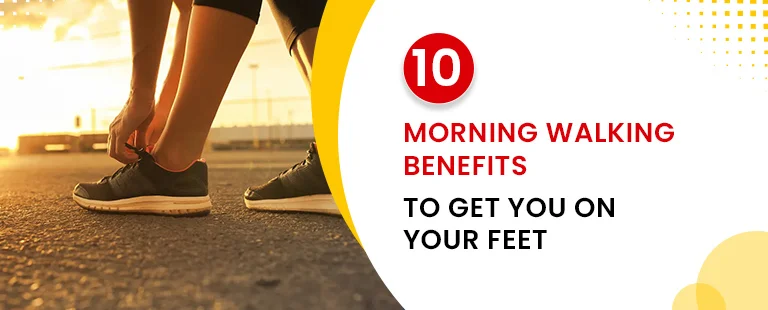Let's be honest. Living with knee pain is exhausting. It's not just the physical ache; it's the mental burden. Every step can feel like a question. Should I take the stairs? Can I play with my kids in the park? Will I be able to stand for long at the function next week? That constant, nagging pain in your knee doesn't just limit your movement; it starts to limit your life.
Many of us in India have a "chalta hai" (it's okay, let it be) attitude towards pain. We apply a balm, tie a crepe bandage, or just learn to live with it, hoping it will go away on its own. Sometimes, a minor sprain or strain does get better with a little rest. But what about the pain that sticks around like an unwanted guest? The kind of pain that makes you wince when you get up from a chair or makes a simple walk feel like a marathon.
Ignoring persistent knee pain can turn a small, manageable problem into a much bigger one. What might have been fixed with simple treatment could later require more complex procedures. The key is knowing when to stop self-treating and start seeking professional medical advice.
This guide is for you. We will walk you through five clear signs that your knee pain is more than just a temporary problem. These are the red flags that tell you it's time to stop guessing and consult an orthopedic specialist.
Sign 1: The Pain Is Constant or Getting Worse
This is the most fundamental sign of all. We all experience aches and pains now and then. You might overdo it at the gym or twist your knee slightly while rushing. This kind of acute pain usually subsides within a few days with rest and maybe an ice pack.
But the pain we're talking about is different. It's chronic.
What does this kind of pain feel like?
- A Dull, Constant Ache: It's there when you wake up, it's there when you're sitting at your desk, and it's there when you go to bed. It's a constant, unwelcome companion.
- Sharp, Stabbing Pain with Movement: Simple actions like standing up, walking, or climbing stairs trigger a sharp, intense pain that makes you stop in your tracks. Many people with conditions like osteoarthritis experience this daily struggle, finding it difficult to even walk without supp
- Pain That Worsens with Activity: You might start your day feeling okay, but as you move around, the pain steadily increases, forcing you to cut your activities short.
- Pain That Wakes You Up at Night: If your knee pain is so severe that it disrupts your sleep, it's a clear signal that the underlying issue is significant and needs medical attention.
Why is this a serious sign?
Pain is your body's alarm system. When it's persistent, it's telling you that something is wrong and isn't fixing itself. Conditions like osteoarthritis, where the protective cartilage in the joint wears down, often start with mild pain and progressively get worse over the years. Similarly, a small tear in your meniscus (the knee's shock absorber) can worsen over time if not addressed, leading to more pain and instability.
The bottom line: If your knee pain has lasted for more than a week or two without improvement, or if it's actively getting worse, your body is sending you a clear message. It's time to listen and see a doctor.
Sign 2: There is Visible Swelling, Redness, or Warmth
Pain is something you feel, but some signs are things you can see and touch. Take a look at your painful knee and compare it to your other one. Do you notice a difference?
What to look for:
- Swelling or Puffiness: Does your knee look larger or puffier than usual? This is often caused by fluid buildup inside the knee joint, a common reaction to injury or inflammation. Patients often report swelling along with severe pain, especially after an injury like a ligament tear.
- Redness: Is the skin over your knee red or discoloured? Redness is a classic sign of inflammation.
- Warmth to the Touch: Place your hand on your painful knee and then on your healthy one. Does the painful knee feel noticeably warmer? This warmth is caused by increased blood flow to the location as your body tries to fight off an illness or heal an injury.
Why is this a serious sign?
Swelling, redness, and warmth are the cardinal signs of inflammation. Your body is mounting a response to something, and you need to find out what.
This could be due to a traumatic injury, like a ligament tear or a fracture, where the body sends fluid and blood to the site to begin the healing process. It could also be a sign of an underlying inflammatory situation, such as rheumatoid arthritis or gout. In some serious cases, these symptoms, especially when accompanied by a fever, could point to an infection in the joint (septic arthritis), which requires immediate medical treatment to prevent permanent damage.
The bottom line: If your knee is visibly swollen, red, or warm, don't just put ice on it and hope for the best. These are physical signs that a doctor needs to see and evaluate.
Sign 3: You Hear or Feel a "Pop," "Snap," or "Grinding"
Sometimes, the most alarming signs are the sounds and sensations coming from your knee. These mechanical symptoms are often a clear indication that something inside the joint has broken or is not moving smoothly.
What do these sounds and sensations mean?
- A Loud "Pop": Many people who tear a major ligament, like the Anterior Cruciate Ligament (ACL), report hearing a distinct "pop" at the moment of injury. This is often followed by quick pain and swelling. Athletes who play sports like football or basketball are particularly familiar with this dreaded sound.
- Snapping or Clicking: Do you feel a "click" or a "snap" every time you bend or straighten your knee? This can be a sign of a meniscal tear, where a piece of torn cartilage gets caught in the joint as it moves.
Grinding or "Bone-on-Bone" Sensation: This is often described as a crunching or grating feeling, known medically as crepitus. It happens when the smooth cartilage covering the ends of your bones has worn away, causing the bones to rub directly against each other. This is a very common symptom of advanced osteoarthritis.
Why is this a serious sign?
Your knee joint is designed to move smoothly and silently. Noises and strange sensations are direct evidence of a mechanical problem. A "pop" from an ACL tear means a key stabilizing structure in your knee is gone, leading to instability. A grinding sensation means you are losing the protective cartilage that allows for pain-free movement.
Ignoring these signs is like continuing to drive a car after hearing a loud noise from the engine. The problem will only get worse, and the eventual repair will be more extensive. Early diagnosis of a ligament or cartilage tear can sometimes be treated with minimally invasive arthroscopic surgery, leading to a quicker recovery.
The bottom line: Your knee shouldn't make noises. If you hear pops, feel snaps, or sense a grinding, it's a clear sign that the internal structures of your joint are damaged. An orthopedic specialist needs to diagnose the cause.
Sign 4: Your Knee Feels Unstable or "Gives Way"
This is one of the most unsettling symptoms. You're simply walking, and suddenly your knee buckles or gives way, making you feel like you're about to fall. This feeling of instability can completely shatter your confidence in your own body.
How does instability manifest?
- Buckling: Your knee suddenly bends when you don't want it to, often when you're putting weight on it.
- Giving Way: A feeling that your knee can no longer support your weight, forcing you to catch yourself to prevent a fall.
- Wobbliness: A general sense that your knee is loose or wobbly, as if the joint isn't held together tightly. Patients with a full ACL rupture often feel a "torsion" or lack of control in their leg before surgery.
Why is this a serious sign?
Your knee's stability comes from a complex network of ligaments that act like strong ropes, holding the bones together. The feeling of your knee giving way is a classic sign that one or more of these crucial ligaments (like the ACL or PCL) has been torn or severely damaged.
This isn't just a matter of inconvenience; it's a matter of safety. An unstable knee can lead to falls, which can cause further injuries like fractures or damage to other joints. Furthermore, every time your knee gives way, the bones can shift abnormally, causing additional injury to the cartilage and other structures within the joint.
The bottom line: A feeling of instability is never normal. It's a direct sign of a significant structural problem in your knee. You must see a doctor to get it evaluated before you suffer a fall or cause more damage.
Sign 5: You Can't Move Your Knee Properly or Bear Weight on It
This final sign is perhaps the most obvious and urgent. It relates to a fundamental loss of function. Your knee is a hinge joint; its job is to bend, straighten, and support your body weight. When it can't do these basic things, you have a serious problem.
What does this loss of function look like?
- Inability to Bear Weight: You find it impossible or extremely painful to put your full weight on your leg. You might need crutches or have to hold onto furniture just to move around.
- Limited Range of Motion: You can't fully straighten your leg, or you can't bend it as much as you used to. After surgery, regaining this range of motion is a key goal of recovery.
- A "Locked" Knee: Your knee gets stuck in one position, and you are physically unable to bend or straighten it. This can be caused by a piece of torn cartilage or a bone fragment getting lodged in the joint mechanism.
- Obvious Deformity: After an injury, does your knee or the area around it look misshapen or out of place? This could indicate a dislocation or a significant fracture.
Why is this a serious sign?
A complete inability to bear weight or move the joint points to a severe injury. This could be a complex fracture, a complete tear of multiple ligaments, a large meniscal tear, or a joint dislocation. These are not "wait and see" injuries.
Delaying treatment can lead to severe complications, including improper healing of bones, chronic instability, muscle wastage (atrophy), and the rapid onset of severe arthritis. Prompt medical care is critical to ensure the joint is set correctly and to plan for the necessary surgical repair to restore function. Many patients who undergo successful surgery are thrilled to simply be able to walk normally again without pain or support.
The bottom line: If you cannot walk on your leg or move your knee through its normal range of motion, you are dealing with a medical emergency. You need to see an orthopedic doctor immediately.
Don't Wait for the Pain to Dictate Your Life
Reading through these signs, you may have recognized your own experience in one or more of them. It can be scary to face the possibility that your knee problem is serious. But knowledge is power. Understanding that these symptoms are not normal is the first step toward getting better.
Ignoring them won't make them disappear. In fact, it almost always makes things worse. A small cartilage tear can become a large one. Mild arthritis can become severe, with bone-on-bone arthritis. An unstable knee can lead to a bad fall and a broken hip.
Taking action now can mean the difference between a simple treatment and a complex surgery. It can mean the difference between a quick recovery and a long, difficult one. Most importantly, it can mean the difference between a life limited by pain and a life of freedom and movement.
An expert orthopedic doctor can give you an accurate diagnosis and explain all your treatment options, from physiotherapy and medication to advanced, minimally invasive surgeries. They can help you understand your condition and create a plan to get you back on your feet, enjoying the life you deserve.
Your knees are meant to carry you through life's journey. Don't let pain stop you in your tracks. If you are experiencing any of these five signs, please make an appointment to see a specialist. It's the most important step you can take towards a pain-free future.



